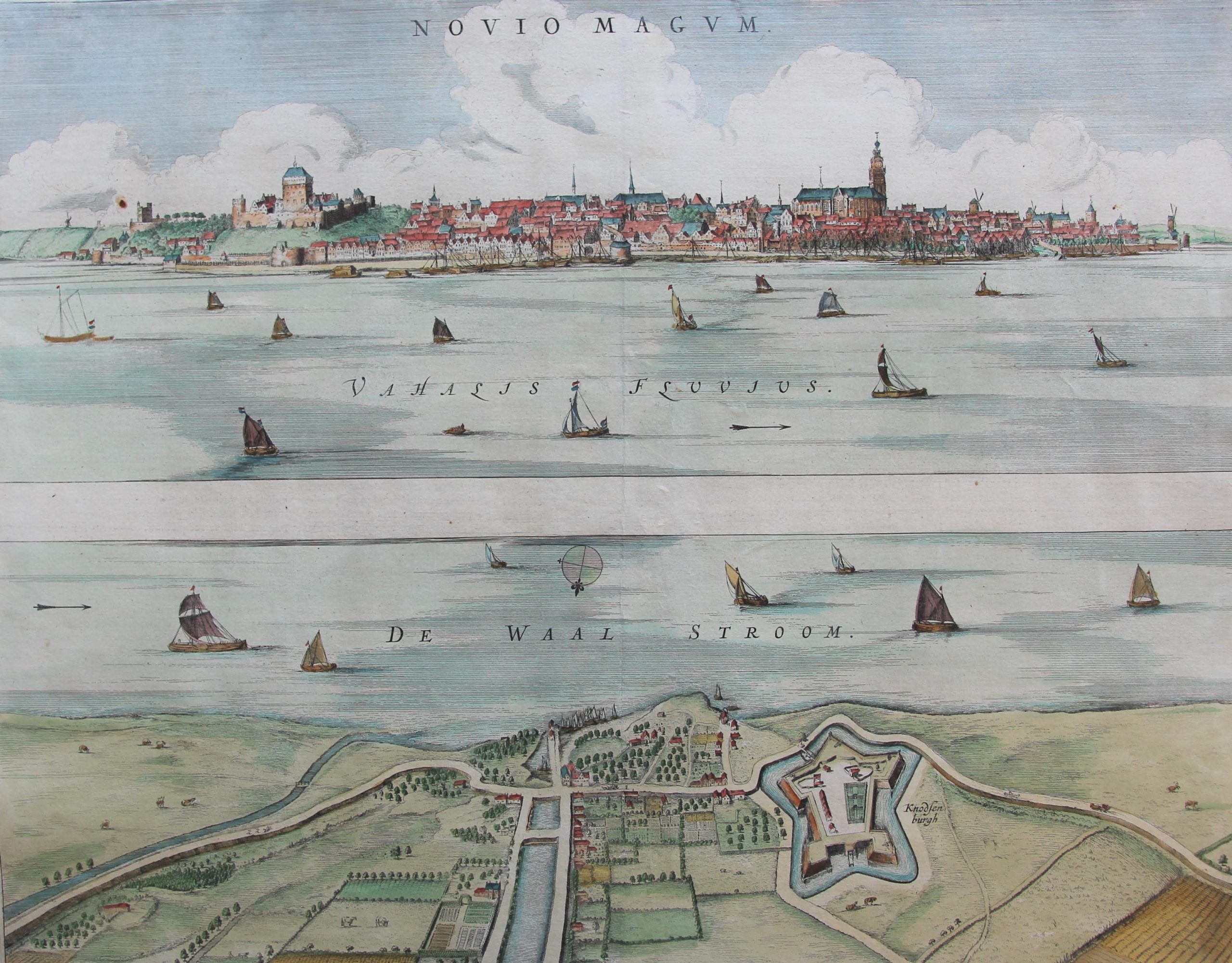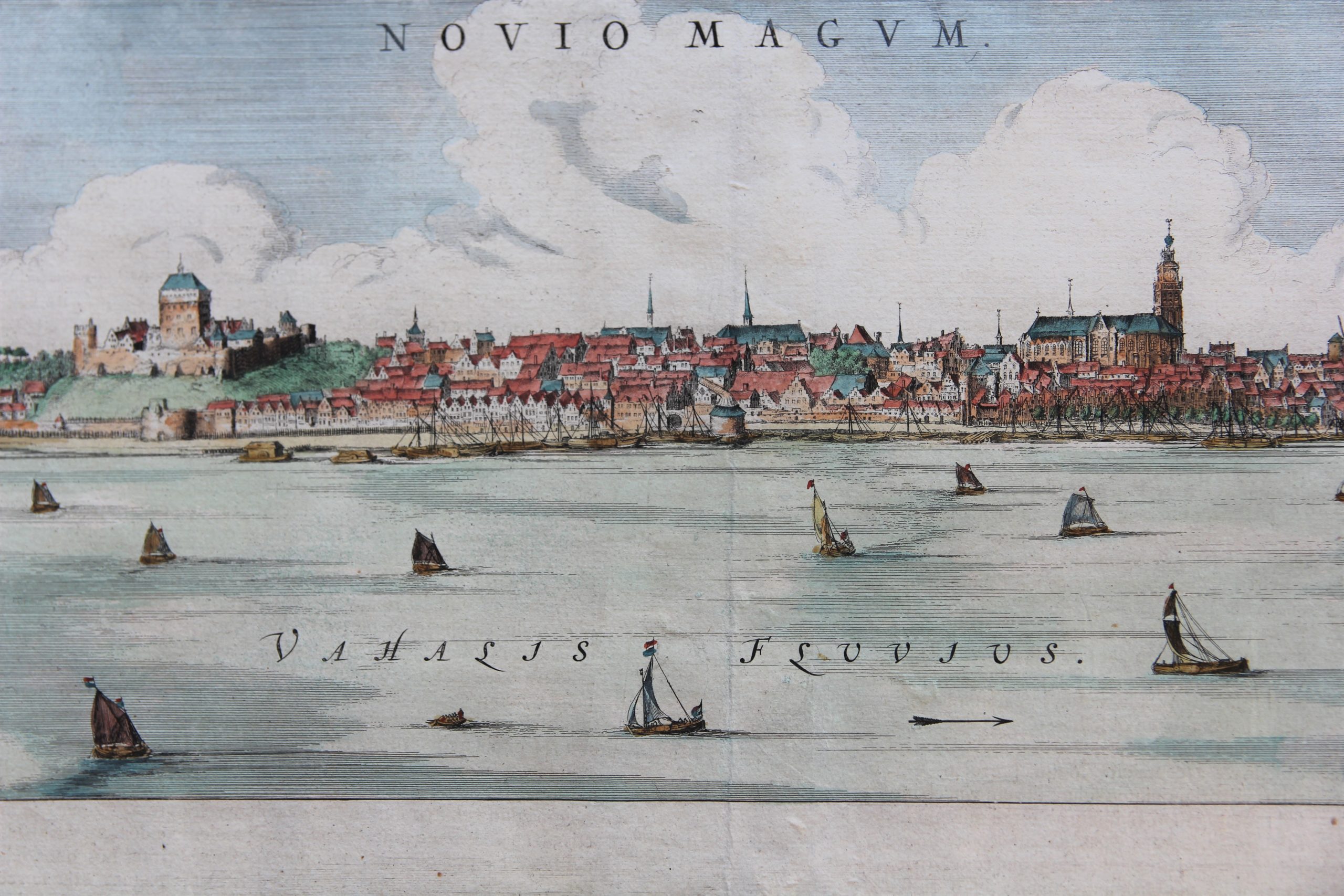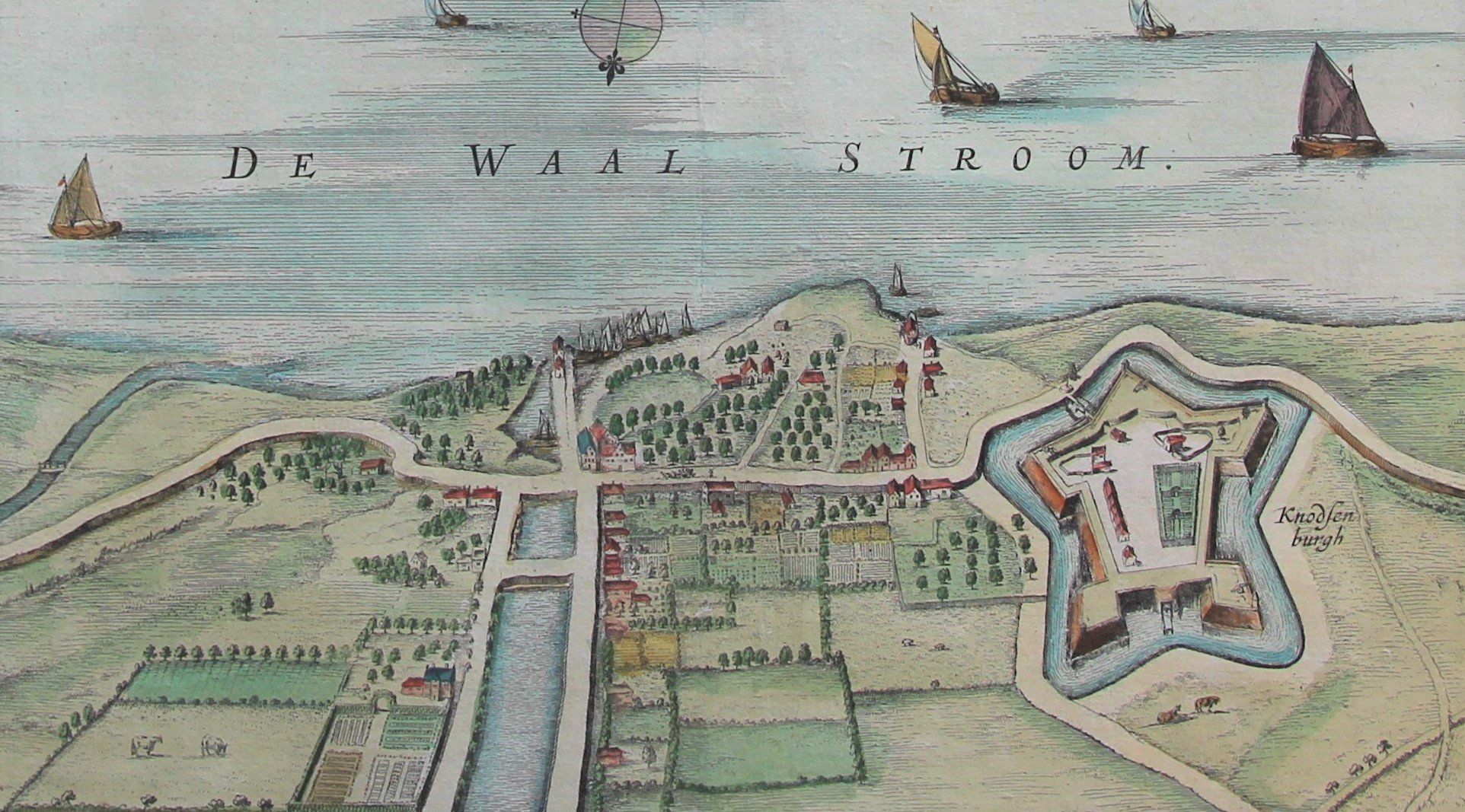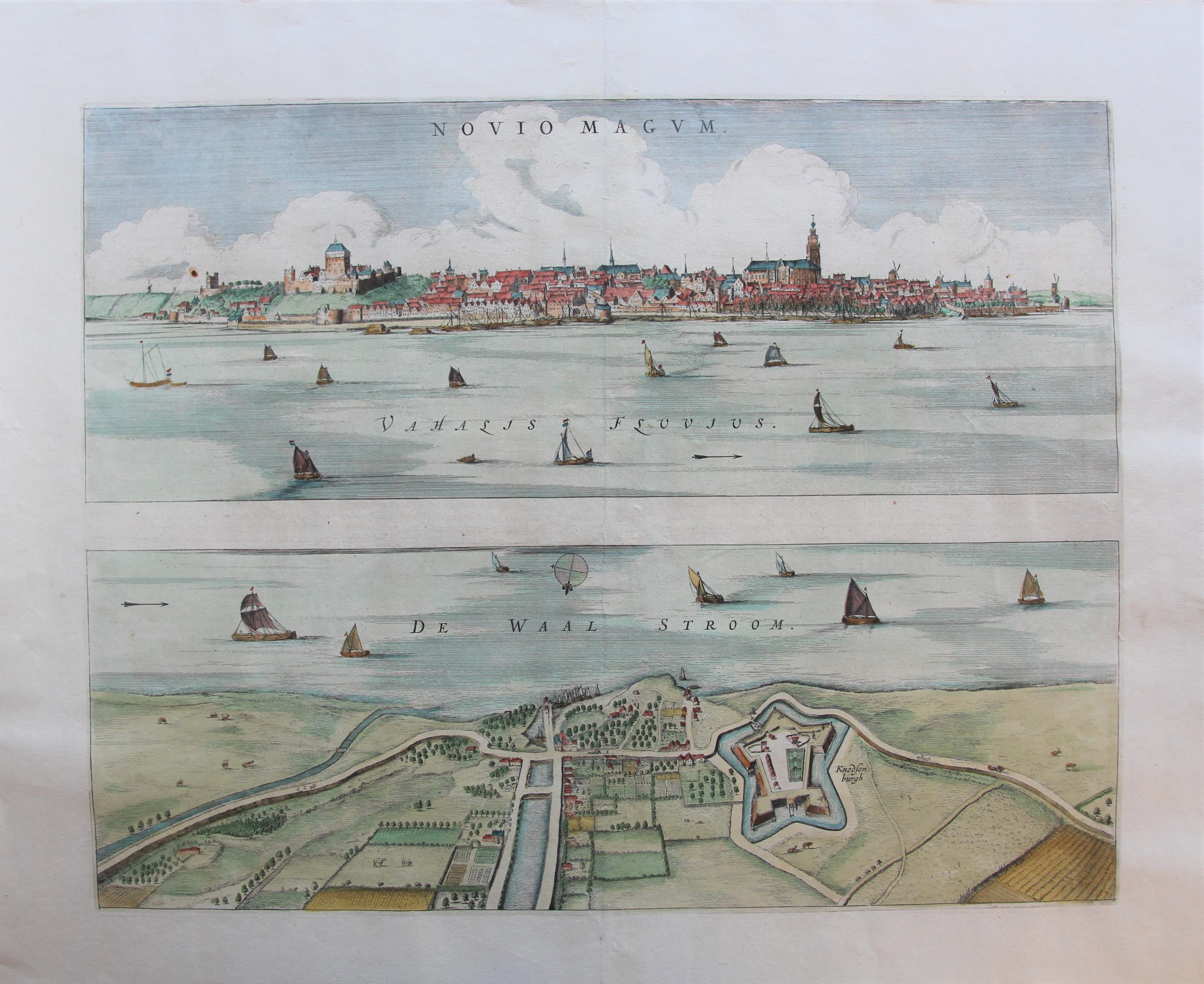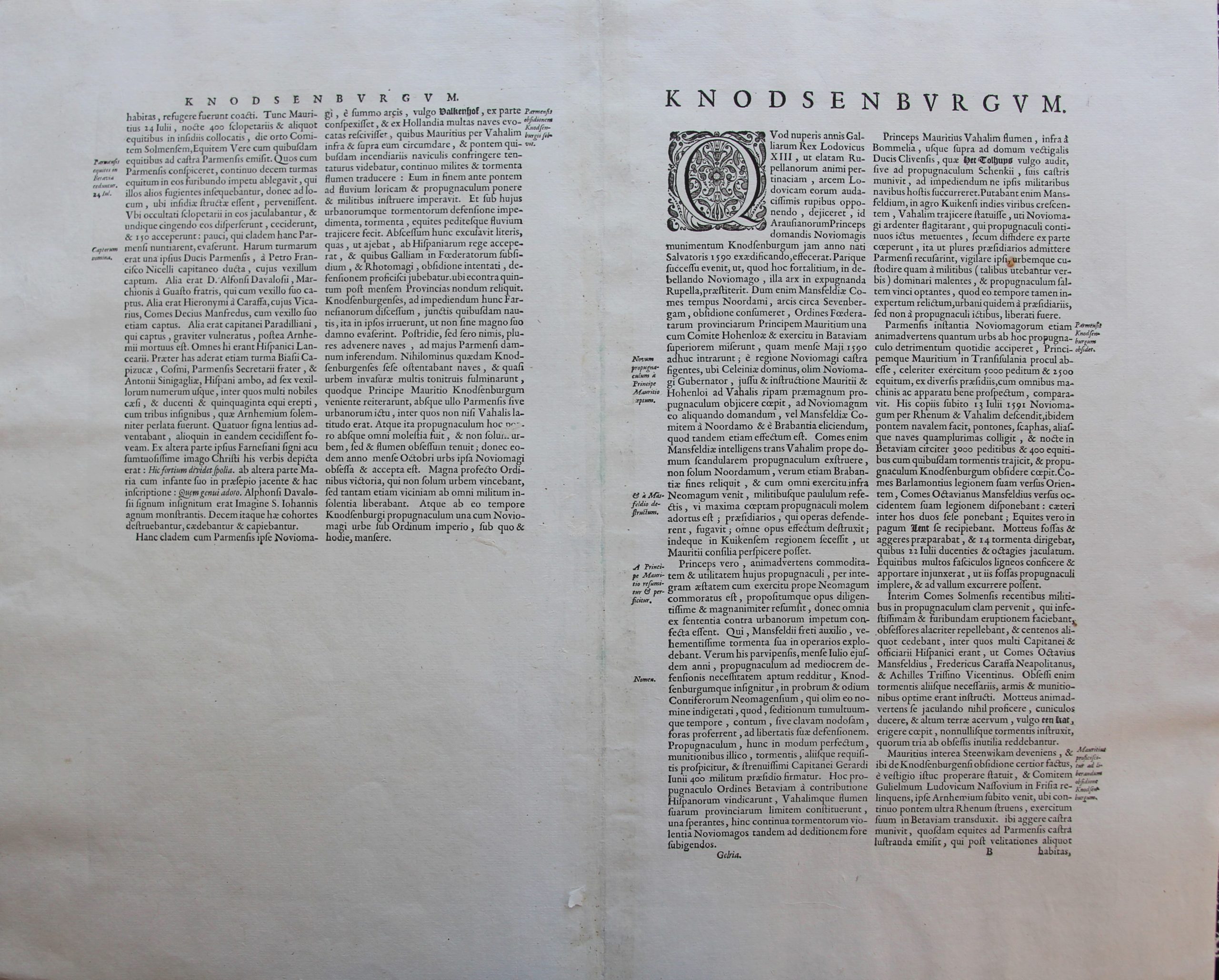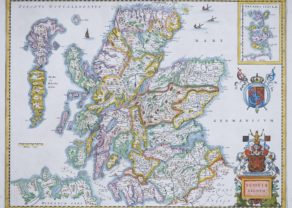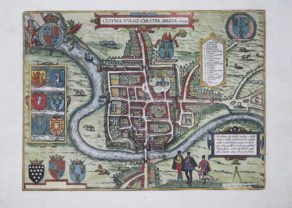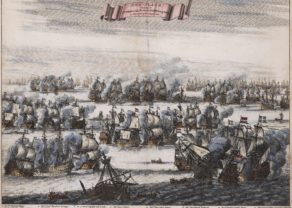Nijmegen double view
Beautiful double view
Detail
Date of first edition: 1649
Date of this map: 1652
Dimensions (not including margins): 42 x 53,7 cm
Dimensions (including margins): 53,2 x 64,5 cm
Condition: Very good. Copper engraving on strong paper. Old colouring with wide margins.
Condition rating: A+
Verso: text in Latin
Map reference: Van der Krogt 4, 3079
From: Novum Ac Magnum Theatrum Urbium Belgicae Liberae Ac Foederatae (Stedenboek), Amsterdam; Van der Krogt 43:113, page B
In stock
Nijmegen
The first mention of Nijmegen in history is in the 1st century BC, when the Romans built a military camp on the place where Nijmegen was to appear; the location had great strategic value because of the surrounding hills, which gave (and continue to give) a good view over the Waal and Rhine valley. Already in 98, Nijmegen was the first of two settlements in what is now the Kingdom of the Netherlands to receive Roman city rights.
Nijmegen became a member of the Hanseatic League in 1364 and later it became a part of the Republic of United Provinces after its capture from the Spanish in 1591.
During Operation Market Garden Nijmegen was liberated from German occupation by the British Grenadier Guards of the Guards Armoured Division, as well as elements of the American 82nd Airborne Division in September 1944. The main objective, the liberation of Arnhem, was not met.
Knodsenburg (bottom view)
Knopdsenburg was initially built as a traditional redoubt with four bastions and a moat by the Dutch rebels in 1585. They wanted to besiege the city of Nijmegen from the other side of the River Waal. The Spanish attacked and chased the Dutch, after which they possessed a strategic place with which they could control the eastern river area. They dismantled the redoubt after a certain period of time. After the recapture in 1590, Maurits van Oranje had the redoubt reinforced and expanded into a fortress, while a kind of redan was built on the city side. Now the fort was taken into use as a base to take Nijmegen. In 1591 the fort was besieged by Parma. It was then fiercely defended by Gerrit de Jong, former commander of Lochem, until they were relieved by Hohenlo. In the 17th century the fort was improved again and it got its star shape with an extra moat. The fort was expanded with an exterior with a glazing around it. In 1672 the French took the fort, from there they could incessantly bombard Nijmegen with their artillery. The fort was decommissioned in 1674. In the 19th century, the fort fell into disrepair. It was sold in 1808 and eventually dismantled except for the canal.
